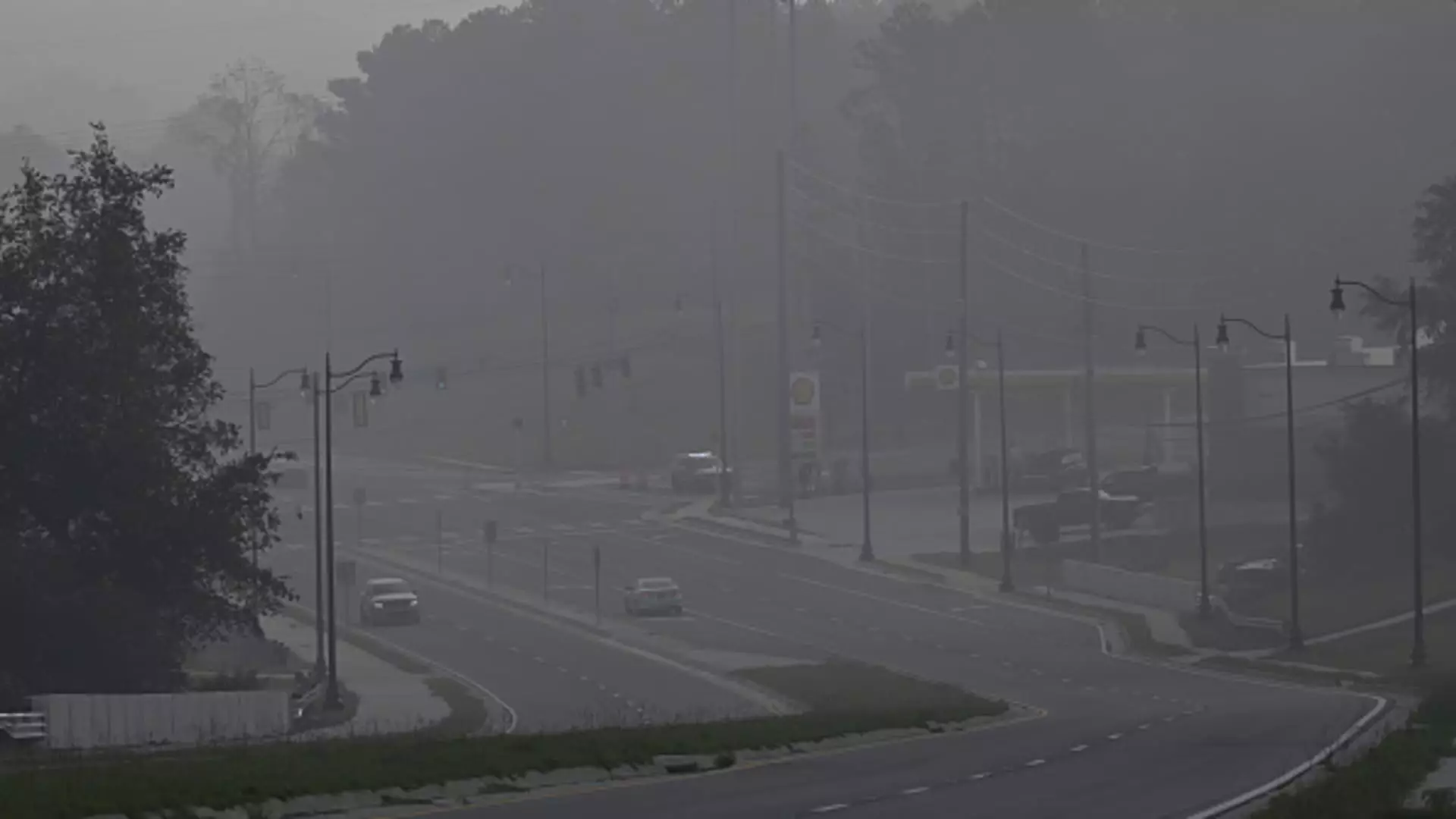On a seemingly quiet Sunday morning in Conyers, a chemical fire at a BioLab facility ignited significant concern for residents in the surrounding areas of Atlanta, Georgia. What began as a fire on the roof of the laboratory has spiraled into broader implications for air quality and safety within a región populated by nearly 100,000 people. As authorities grappled with the extent of the chemical fallout, questions around regulatory effectiveness, transparency, and community trust have surfaced, posing challenges for local officials and emergency response teams.
Following the incident, the Georgia Emergency Management and Homeland Security Agency (GEMHSA) reported elevated levels of chlorine detectable around the BioLab facility. This prompted a shelter-in-place recommendation for residents of Rockdale County, thus forcing nearby communities to navigate the delicate balance between safety and normalcy. Compounded by weather forecasts predicting a change in wind patterns, the situation evolved into a troubling spectacle as haze and chlorine odors began permeating the atmosphere, raising alarm bells not only about air quality but also about public health.
In a town like Conyers, where the local economy often rests on the stability of its businesses, the implications of such incidents can be devastating. With reports surfacing detailing discomfort and respiratory problems among residents, the community’s concerns were palpable. Many took to social media to express their frustration, highlighting the visible disconnect between official statements and the reality on the ground. Such reactions underscore the inherent anxiety communities face when industrial operations risk public well-being.
Local residents found themselves inundated with conflicting messages from emergency management agencies. For instance, new safety advisories were constantly being issued, leaving many to question the reliability of the information being communicated. As a nearby worker articulated, “It’s a very irritating situation for us citizens,” emphasizing the emotional toll exacted by uncertainty. When public safety depends heavily on effective communication, mistrust can quickly become a major hurdle. Residents reported discomfort and pressing concerns over health issues like chest pain and breathing difficulties, stirring public skepticism regarding the safety assessments by officials.
This scenario exemplifies a broader issue prevalent in emergency management—communication breakdowns can exacerbate crises. Rapidly changing situations necessitate clear, consistent messaging to ensure that the community feels informed and safe. Unfortunately, the experience in Rockdale County reveals how diverging statements can amplify confusion and fear, leading citizens to advocate for more effective safety regulations.
Despite assurances from the GEMHSA about manageable chlorine levels, the shadows of lingering distrust loom large over the community. While workers at the plant continue efforts to neutralize chlorine levels, many local residents are calling for a reassessment of the BioLab facility and its role in their community. This push reveals an intrinsic societal longing for security—and the demand for accountability extends to both private enterprises and government agencies.
Additionally, the potential for long-term health effects due to exposure to the chemical compounds released during the fire is concerning. For residents with pre-existing conditions, the risk could translate into severe or chronic health challenges. Hence, communities affected by industrial accidents might often find themselves entangled in bureaucratic red tape while grappling with their immediate and future health concerns.
The unfortunate incident in Atlanta serves as a critical reminder of the need for comprehensive crisis management strategies that prioritize residents’ safety and clear communication while fostering community trust. In light of the BioLab situation, a reevaluation of industry regulations and proactive measures for disaster response can significantly contribute towards rebuilding confidence. In a world where chemical safety must align with public health, the lessons learned from this episode could potentially catalyze meaningful reforms that protect communities from future uncertainties. An informed citizenry, robust regulatory frameworks, and transparent communication are essential elements in addressing the evolving challenges posed by industrial activities in urban settings.


Leave a Reply